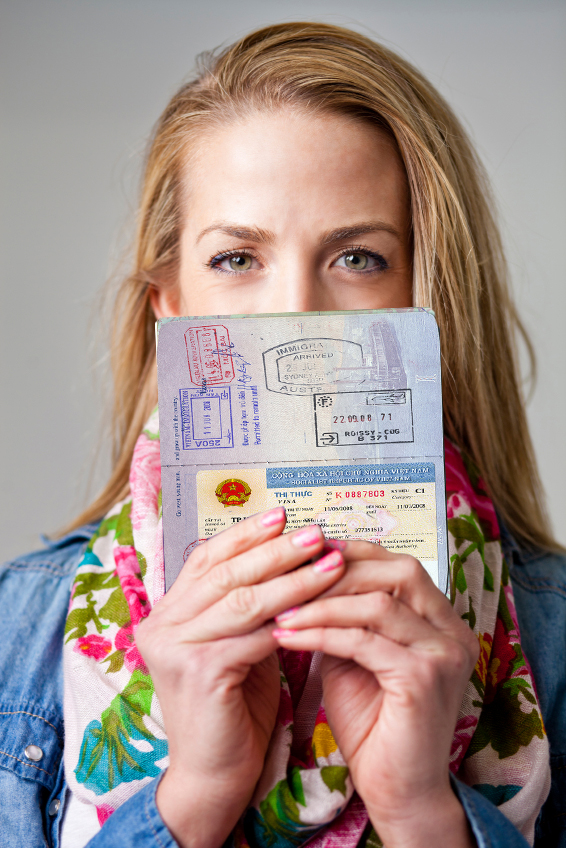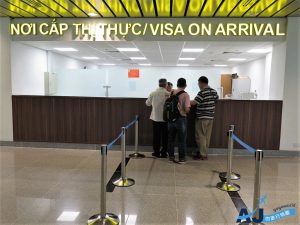As you know, Japanese citizens are exempt from VISA entry into Vietnam with a residence period not exceeding 15 days. However, in reality there are many cases where your business …

Life is growing, and the demand of travelling overseas has become one of the basic needs of people. As one of the developing countries, Vietnam has also become a destination to attract many visitors to travel, work or seek for markets … so that the demand for visa (visas) also should be more necessary. Currently, a Vietnamese visa is requested in three types: Applying directly through the Vietnamese embassy or consulate in the host country, electronic visa, and visa upon arrival. What are the differences between these types? What kind is right for you? So let’s get to know more in the article below.
Applying for a visa directly from the Vietnamese embassy or consulate is a traditional way, suitable for those who are close to the cities with Vietnamese representative offices.
Step 1: Find the address of the Vietnamese embassy or consulate in your country.
Step 2: Prepare the above documents
Step 3: Submit your file and visa application fee (this fee is not refundable if the application is not successful)
Step 4: Get an appointment and come to receive the results of the visa application from the Vietnamese embassy or consulate (for cases where you want to obtain a visa through the post office, you can register and pay fees to Vietnamese representation agencies).
Usually the time for receiving the results of the visa application is from 5 to 7 working days (excluding holidays and holidays) depending on the appointment of the Vietnamese embassy or consulate.
– The type of visa obtained from a Vietnamese embassy in the host country has the advantage of ensuring a high success rate in addition to being more reliable because it is direct from the Vietnamese government.
– Various types of visas, you can apply for entry once or several times on conditions from one month to one year.
In addition, this type also has several disadvantages that you should consider:
An on-arrival visa is the second type of development to solve the visa application problems. Simply understand, by this type you only need to obtain a “visa approval letter” (this letter can only be obtained from travel agents or visa agencies in Vietnam) before moving to the entry airport and using it to receive the visa stamp upon arrival at Vietnam airport.
To apply for the visa approval letter:
To receive visa stamps at the airport:
Step 1: Search for a reliable visa agency, provide personal information, and pay fees for the visa approval letter (this fee is refunded if the application is unsuccessful)
Step 2: Obtain the visa approval letter, print it and present it when boarding the plane
Step 3: Go to the Vietnam airport portal, find the visa upon arrival office, provide the necessary documents, pay the stamp fees, and collect the passport with the visa inside.

After you arrive at Vietnam Airport, please find the visa upon arrival counter, submit the visa approval letter with your passport, pay the fees, and obtain a passport with the visa stamp inside.
The time for receiving a visa approval letter is two working days (it may be faster in one hour, one day … if you use the urgent service and pay additional fees).
The type of delegation is not sure if you cannot find accredited agency with a good reputation
When many people enter the airport on a busy days, it may take a lot of for waiting to receive the visa stamp on your passport.
The e-visa is the latest type of visa application in Vietnam currently. This type was created to overcome the defects of the above two types for visa application. All you have to do is provide the information on the website and retrieve the electronic visa via e-mail, print it and present it on your passport to enter Vietnam.
Scanning a passport with a validity period of no less than 6 months.
Scan personal photos (600 x 400 pixels)
Visa or Master Card (used to pay visa fees)
Step 1: Enter the Vietnam e-Visa registration on the website
https://www.vietnamimmigration.com/apply-vietnam-visa/
Step 2: Fill in the required information on the website, upload the photos and the passport.
Step 3: Pay the electronic visa fee (this fee is fully refundable if the application is refused). After this step you will receive the electronic email confirmation with registration code.
Step 4: Print the visa when receiving the electronic visa via e-mail.

Registration of electronic visas is very simple. You only need to provide personal information and upload passport photos with personal photos
The time to receive an electronic visa is 2 working days. You can track the results on the website by chat support or email.
https://www.vietnamimmigration.com/vietnam-evisa/which-countries-are-eligible-for-vietnam-e-visa/
The above is currently analyzing 3 types of visa applicants for Vietnam. In general, each type has its advantages and disadvantages. You can refer to the above information, consider and choose the most appropriate visa type according to your specific circumstances. Whatever service you use, search for reputable companies and make clear the issues related to fees, procedures, and support … to avoid future risks.

